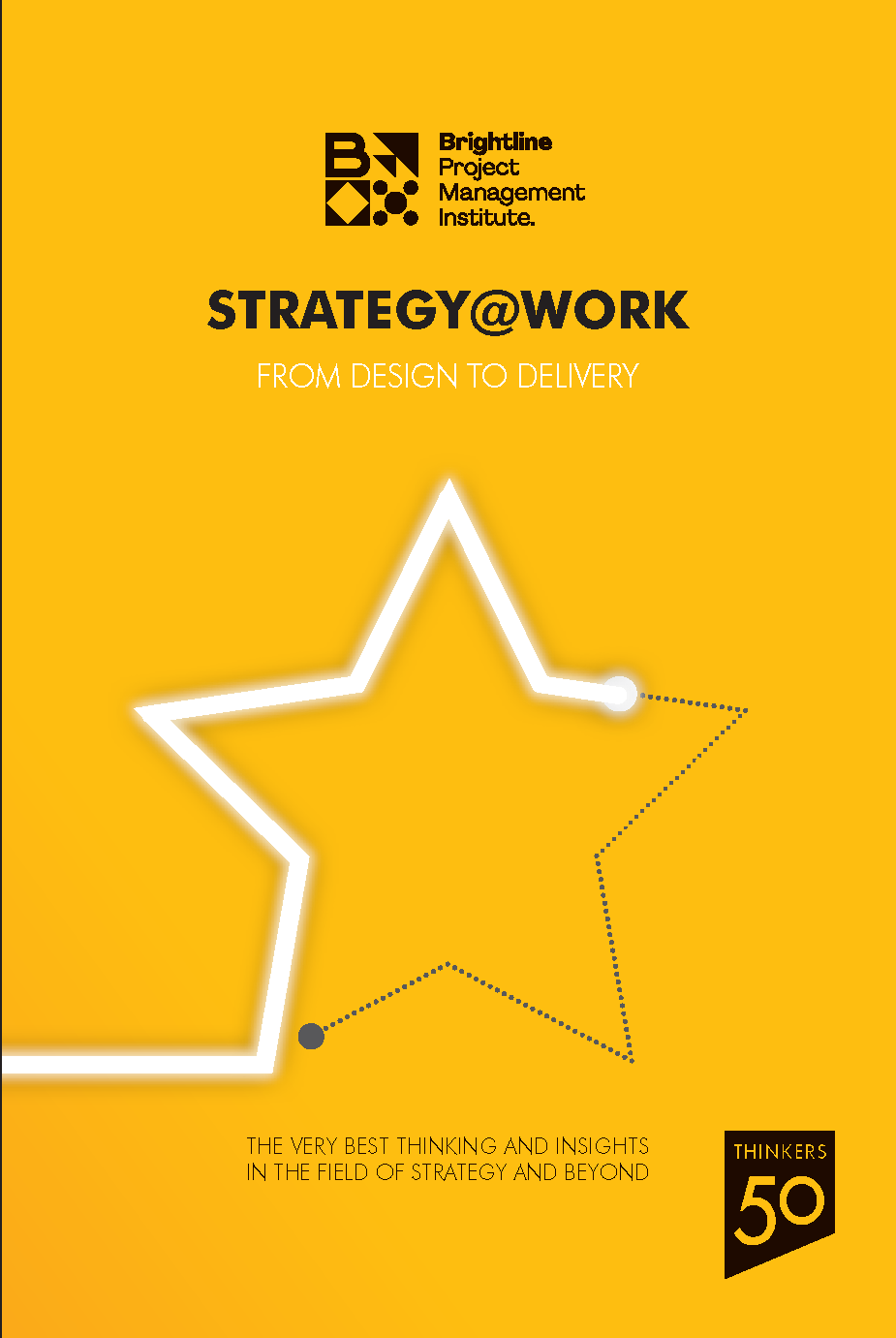Strategy@Work: From design to delivery
Distilled to three words it is: Getting things done. Strategy@Work showcases some of the very best thinkers in the field of strategy and beyond. We hope that it acts as a catalyst for readers to get things done.

If you ask a manager what excites them about their job, what gets them out of bed in the morning, what provides meaning to their work, their answers tend to be similar no matter where they are in the world, who they work for or what their job is.
Distilled to three words it is: Getting things done. Strategy@Work showcases some of the very best thinkers in the field of strategy and beyond. We hope that it acts as a catalyst for readers to get things done.
It doesn’t matter if they’re running a production line in Qingdao, managing a team in a Silicon Valley giant or overseeing the building of a bridge in Mumbai, managers revel in the sense of completion, of turning a plan or an idea into reality; creating something; implementation. They are only human. Given this aspiration to get things done, managers and leaders have to deal with a fair amount of frustration along the way. Organizations have a patchy and somewhat indifferent record in transforming ideas, initiatives, strategies and dreams into reality.
Research by Brightline with the Economist Intelligence Unit in 2017 surveyed 500 executives. We found that only one in ten reached their strategic goals, and 53 per cent agreed that poor delivery capability is a source of competitive disadvantage. A total of 59 per cent of survey respondents said that their organizations “often struggle to bridge the gap between strategy development and its practice, day-to-day implementation”.
“The reason strategy execution is often glossed over by even the most astute strategy consultants is because it’s not a strategy challenge. It’s a human behaviour one,” argues Peter Bregman in a recent Harvard Business Review article. “To deliver stellar results, people need to be hyper-aligned and laser-focused on the highest-impact actions that will drive the organization’s most important outcomes. But even in well-run, stable organizations, people are misaligned, too broadly focused and working at cross-purposes.”
Getting things done is hard and difficult work. We live in turbulent times and creating robust and effective business strategies is hugely demanding. Turning them into reality equally so.
The Brightline Initiative aims to help organizations and managers to make sense of these challenges and to make better decisions as they create and implement strategies. It is a coalition dedicated to helping organizations bridge the gap between strategy design and strategy delivery.
Working with our partners at Thinkers50 we have created Strategy@Work. It showcases some of the very best thinkers in the field of strategy and beyond. We hope that it acts as a catalyst for readers to get things done.
Table of contents
- Introduction – Ricardo Viana Vargas
- Acknowledgments
- Essential thinkers
- Bridging the gap between strategy design and implementation – Mark A. Langley
- The hard truth of change – Perry Keenan, Jeanne Kwong Bickford, Peter Tollman & Grant Freeland
- In search of strategy – Stuart Crainer & Des Dearlove
- Essential thinker: Roger Martin
- In conversation: Roger Martin
- Letter to the CEO – Roger Martin
- The changing nature of change – Deborah Rowland
- Dancing with gorillas – Shameen Prasanthanam
- In conversation: David Marlow
- Essential thinker: Rita McGrath
- In conversation: Rita McGrath
- How to succeed with strategy – Stuart Crainer & Des Dearlove
- Letter to the CEO – Alex Osterwalder & Yves Pigneur
- Great strategies need great delivery: - The 10 principles of implementation excellence – Ricardo Viana Vargas & Edivandro Conforto
- The Business Portfolio Map – Alex Osterwalder & Yves Pigneur
- Only communicate – Stuart Crainer & Des Dearlove
- Essential thinker: Richard D'Aveni
- In conversation: Richard D'Aveni
- In praise of additives – Richard D'Aveni
- The power of judgement – Alessandro di Fiore
- Why enterprises exist – Zhang Ruimin
- The difference that makes a difference – Alison Reynolds & David Lewis
- The real lessons of disruption – Alf Rehn
- Focus, the differentiator – Antonio Nieto Rodriguez
- In conversation: Rebecca Parsons
- Five questions to ask of your purpose – Dominic Houlder & Nandu Nandkishore
- Essential thinker: Pankaj Ghemawat
- In conversation: Pankaj Ghemawat
- Agility for the strategist – Loizos Heracleous
- Management in the age of meltdowns – András Tilcsik
- The future of MNCs – Anil Gupta & Haiyan Wang
- Beyond strategy – Lessons of execution excellence – Scott A Snell & Kenneth J Carrig
About Thinkers50
The Thinkers50 scans, ranks and shares the greatest management ideas of our times. Its definitive global ranking of management thinkers is published every two years.
Since its launch in 2001, the ranking has been topped by Peter Drucker, Michael Porter, CK Prahalad and Clay Christensen. The Thinkers50 Awards have been described by the Financial Times as “the Oscars of management thinking”.
The Thinkers50 has ten established criteria by which thinkers are evaluated – originality of ideas; practicality of ideas; presentation style; written communication; loyalty of followers; business sense; international outlook; rigor of research; impact of ideas and the power to inspire.
Thinkers50 champions the latest management ideas worldwide. Thinkers50 Europe is a partnership between Thinkers50 and the City of Odense. It hosts the annual Thinkers50 European Business Forum. Thinkers50 China is based in Qingdao and is a partnership with the Haier Group.